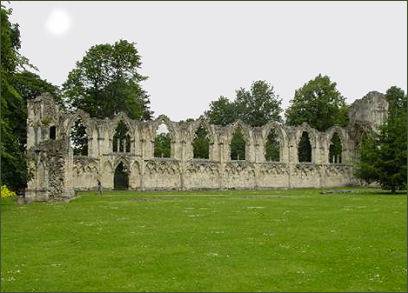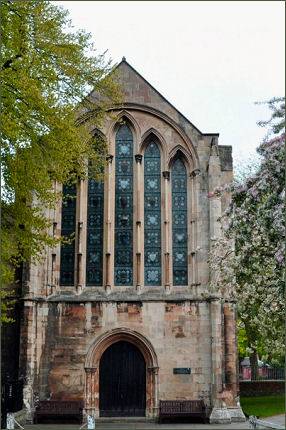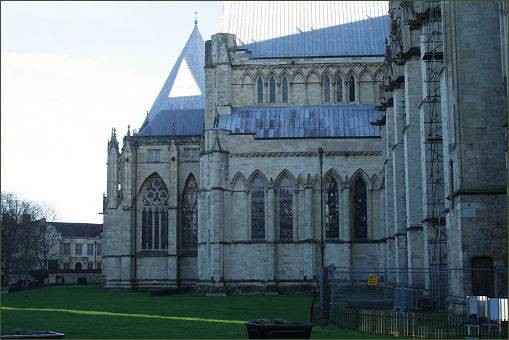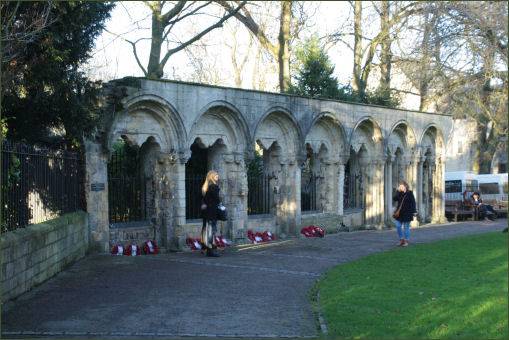Dean's Park

 Dean's Park, a favoured spot of visitors to York in the summer months, is a pleasant, green open space situated to the north side of York Minster which provides superb views and excellent photo opportunities of the Minster buildings.
Dean's Park, a favoured spot of visitors to York in the summer months, is a pleasant, green open space situated to the north side of York Minster which provides superb views and excellent photo opportunities of the Minster buildings.
Originally the park was known as Minster Close and housed the Old Palace of the Archbishops of York which dated back to the twelfth century.
The Old Palace was used by York's Archbishops until the purchase of Bishopthorpe Palace, on the outskirts of the city, by Archbishop Walter de Grey, in 1241, which then became the official residence of the Archbishop of York.
Dean's Park was known as the Deanery from 1830. The surviving remains of the medieval Old Palace include the building that once housed the palace's chapel and some arcading dating back to the twelfth century, which now serves as a memorial to the Second Infantry Division who prevented the Japanese from invading India. The structure has seven arches, in the central one is a bronze laurel wreath which contains the Kohima epitaph- "When you go home, tell them of us and say, for your tomorrow, we gave our today".
The Old Palace's chapel, now a Grade I listed building, was restored in 1810 and was afterwards used as the Minster Library, the largest cathedral library in Britain, it holds over 130,000 items. It houses the library, archives, the Collections Department and conservation studio of York Minster.
The library also holds special collections including a comprehensive collection of material on the history of York and Yorkshire; a collection of sixteenth-twentieth century printed and manuscript music; and a large collection of eighteenth and nineteenth century theatre playbills.
In the early seventeenth century a mansion was constructed on the site by the politician Sir Arthur Ingram, who became High Sherrif of Yorkshire. In 1642, during the civil war, King Charles I and his court were guests there, while royalist propaganda was issued from his printing press which was set up in nearby St William's College. The building had fallen into a state of disrepair by the late eighteenth century; the site was purchased by the dean and chapter of York Minster when the site was cleared and gardens laid out.
The octagonal stone festival Bench was added in 2000, it is the work of a group of 70 stone carvers, it surrounds a sycamore tree and is covered with a multitude of grotesque figures.


Normal opening hours are from 7am to dusk daily. The Library is open to the public Monday to Friday between 9.00am to 5.00pm.
